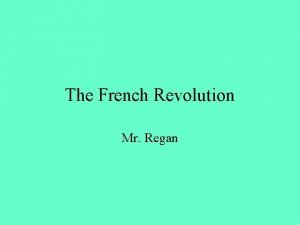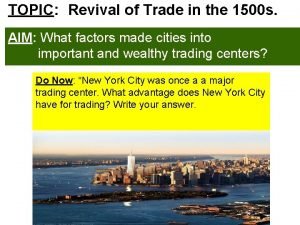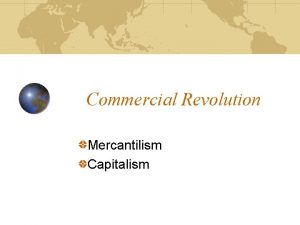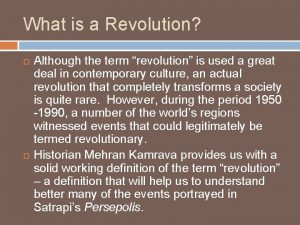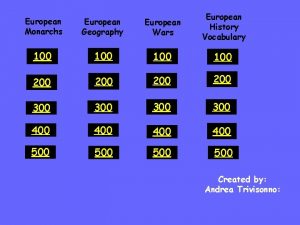The European Commercial Revolution The Commercial Revolution Although









- Slides: 9

The European Commercial Revolution

The Commercial Revolution • Although most of Europe remained agricultural during this period, the fastest growing part of the European economy was in the trade of goods • Especially goods manufactured in Europe or brought from Asia and the Americas • The “Commercial Revolution” was an important step in the transition from the local economies of the Middle Ages to the formation of a truly global economy.

Global Trade • People began producing more goods for sale rather than for their own use. • Trade increased: • Sugar, rice, tobacco, and precious metals were shipped from the Americas to Europe • Ming China exported silks and porcelain • India exported tea • The East Indies produced spices • Africa provided enslaved workers • Europe exported woolen cloth, lumber, & finished goods


Mercantilism • European kings sought to increase their wealth through the system of Mercantilism. • They also taught that wealth and power were based on amassing gold and silver • Mercantilists though that the total wealth of the world was limited so that it had to be gained through war or trade. • For this reason, France, England, and Holland established overseas colonies in imitation of Spain • Each European “Mother Country” exported finished goods to its colonists in exchange for less costly raw materials. • This was meant to lead to a flow of money back to the “mother country”


Emergence of Free Enterprise • Merchants and bankers laid the foundations for the free enterprise system (aka capitalism) • Under this system business owners risked their capital (money) in a business in order to make profits. • The growth of new businesses (like weaving cloth, forging ironwares, and building ships) led to a demand for huge sums of money. • Money was needed to pay for the facilities and materials used in manufacturing or international trade. • Ships had to be insured because of their high risks • European rulers also needed money to buy equipment and hire troops to wage war.

Joint Stock Companies • To raise these large sums, the first joint-stock companies were formed. • These were privately-owned companies that sold stock to investors. • Investors bought the stock for a share of the profit. • The accumulation of capital by these companies allowed the purchase of large amounts of raw materials or equipment such as ships.

Results of the Commercial Revolution • Europeans had many more products from which to choose • They could have tea, sugar, coffee, cotton cloth, and other goods. • There were more books and new forms of learning and entertainment, such as theater groups, newspapers and schools • This led to more choices in occupations as well as in consumption. • These advances led to a rising standard of living for many Europeans.
 Commercial and noncommercial food service operations
Commercial and noncommercial food service operations European rulers denounced the french revolution because
European rulers denounced the french revolution because Explain how the printing revolution shaped european society
Explain how the printing revolution shaped european society Commercial revolution
Commercial revolution Commercial revolution
Commercial revolution The commercial revolution
The commercial revolution Mercantilism and commercial revolution
Mercantilism and commercial revolution Sample of subordinating conjunction
Sample of subordinating conjunction Effect of traffic
Effect of traffic Knowledge not shared is wasted
Knowledge not shared is wasted

